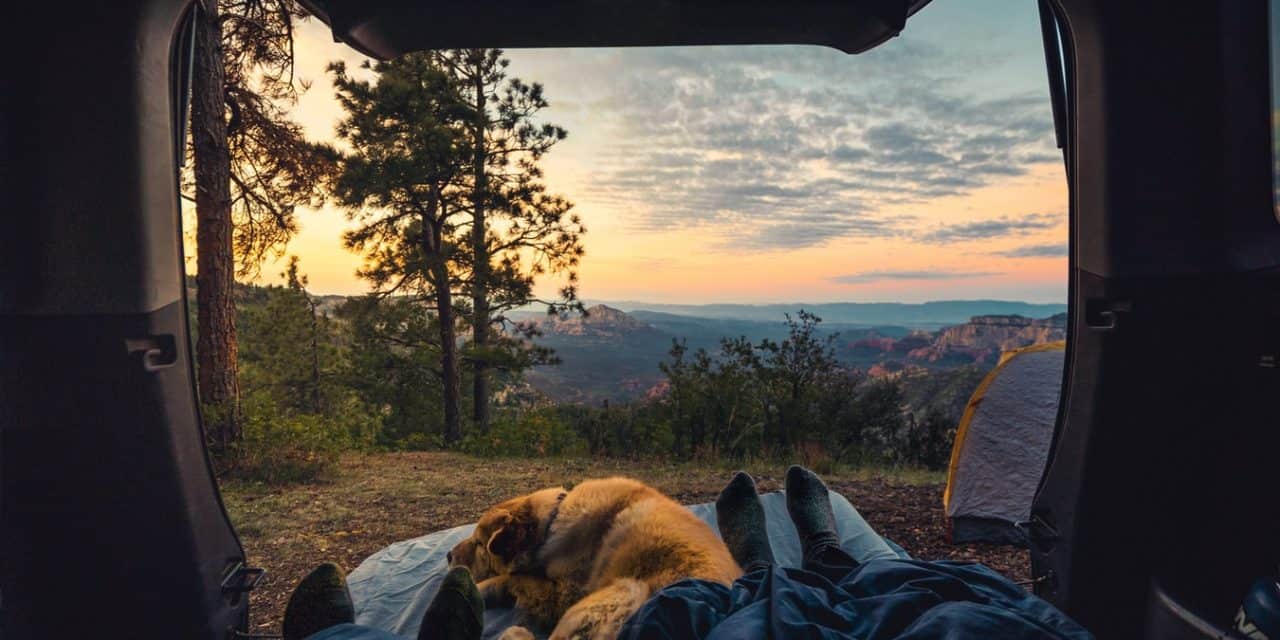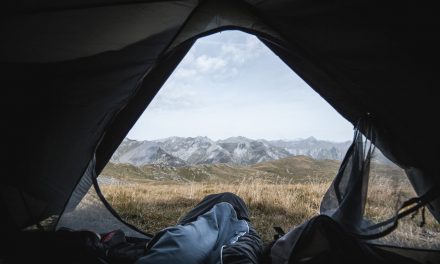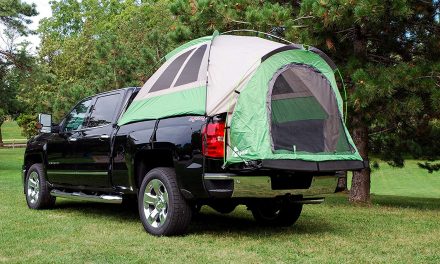In a nutshell, dry camping is actually just as simple as it sounds. It means taking a car, truck, or RV, parking it somewhere without hookups, and camping out of the back.
For some people, it’s a quick way to load up the car and get out for a weekend. For others, it’s a gateway drug into van life and full-blown digital nomadism. Once you start to pare down your camping gear to the bare necessities, the possibilities for how to spend your weekends really, really opens up.
We put together a quick overview of dry camping for beginners to help you learn some of the tips and tricks that will get you out the door and on the road faster come 5 PM Friday. Where you go from there is, of course, up to you.
Things to Consider
Outfitting Your Vehicle
Dry camping can be as simple as laying down the back seats of your sedan and sleeping on a camping pad inside, or as complex as buying a fully outfitted $50,000 sprinter van. What you need to consider is what you can do with what you have. A few simple additions to your current vehicle can make a world of difference for comfort.
If you have a truck, purchasing a camper shell and building some basic furniture for the back is a great way to go. Truck beds have a good amount of room for sleeping and storage, and you won’t need to tow anything. They’re also pretty inconspicuous, if your intended destination requires not raising too much attention. A step above this option is a truck bed camper, which comes pre-outfitted, or a truck tent.
The van is the classic go-to vehicle for dry camping. It’s simple, with some more wiggle room for building a comfortable setup and having everything you need. You could go as simple as taking out the back seats and hanging a hammock in the back, or build an entire living space for yourself.
If you want to go all-out, you can always go with an RV or bumper pull camper trailer. This will maximize your space, and the amount of amenities you can take with you. Trailers and RVs also vary greatly in size. Just consider how often you intend to go, for how long, and whether or not being noticeable is important.
Good Gear To Have On Hand
The main challenge of dry camping is just that. You won’t have running water, so you’ll have to pack it all in. Any running water appliances will have to be bought or improvised. The good news is there are lots of great options for camp showers, toilets, and even sinks that work perfectly well off-grid.
If you’re going for any more than a night, you’ll probably need some kind of power as well. Thanks to the massive boom in dirtbag culture currently sweeping the US (and the world at large), there are plenty of cheap and easy solutions. Every dry camper should have a good cooler for keeping food cold for days or even weeks at a stretch. If you have appliances you want to run or devices to charge, you can add a simple generator or solar setup.
Lastly, think about preparing food. The propane camp stove is a must for basic dry camping. More luxurious setups may have gas or even electric stoves. Try to keep your list of things to bring short. For example, a good cast iron skillet works well for all kinds of different uses, can be cleaned easily, and stores nicely. When you’re limited on space, always try and bring as little as you really need.
Where To Go and How To Deal With Red Tape
You can dry camp just about anywhere you can park your car/truck/van/RV/school bus. Depending on where you live, some places fall under a bit of a grey area in terms of whether overnight parking is allowed. Of course, you should never camp on private property without permission or in places where camping is specifically not allowed. But in places where it’s unclear, it can be better to lie low and just attract as little attention to yourself as possible. This is where having a less conspicuous vehicle comes in handy.
Overall the best bet is to find some public land that allows dispersed camping. This will save you the headache while planning. BLM (the Bureau of Land Management) land and US Forest Service land are the two best options for overnighting (just about) wherever you like. This is especially easy in the West, where most of the land is accessible to the public.
It’s a good idea to pour over some maps of the area where you live before you go. Familiarize yourself with natural areas, who manages them, and what the rules are for camping. The more you know ahead of time, the better luck you’ll have finding a spot that no one else has even considered.
Pack It In, Pack It Out
When dry camping on public land, be respectful of the land and follow the Leave No Trace code of ethics. If there are no fire rings where you’re parked, don’t create new ones. Follow all posted rules and pay fees whenever necessary. Pack out all your trash and waste. Trashing the place you spend the night is a bad move, always.
Ask Yourself, “How Much Do I Really Need?”
Let’s paint a picture. It’s 7:00 PM, Friday night. You left work a half hour early, grabbed a few gallons of water on the way home, and threw your sleeping bag and pad into your car. Thinking quick, you loaded your stove, some propane, a camp chair, your cooler, and some breakfast food for the morning. You high-tailed it out of town into the woods and within an hour you were cozied up next to a campfire enjoying the quiet. Camping can be entirely this simple. You just have to know what you need and a little sense of adventure.
- What is Dry Camping? A Beginner’s Guide - November 19, 2022
- Where You Can Camp at Sequoia National Park - November 19, 2022
- 5 Best Fishing Bobbers & When To Use One - March 14, 2021



![5 Best Hammock Stands For 2021 [Buyers Guide]](https://ablecamper.com/wp-content/uploads/2020/06/20201227_160725-440x264.jpg)


